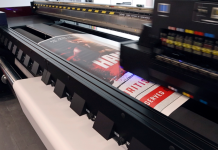In today’s world of social media, leaflets and flyers may seem a little ‘old hat’ for promoting your company, but when it comes to getting the word out, they can still be very effective. If you do it right, that is.
Here, in 10 easy-to-follow steps, you’ll learn how creating leaflets and flyers can help generate business in a way online promotion just can’t match.
1. Choose a message
Before you even think about working on the design, you need to know what it is you want to publicise. Do you want your flyer or leaflet to give a brief overview of your business? Do you want it to sell a specific service, or advertise a special offer or event? Knowing what you want to say is key to designing the perfect leaflet or flyer.
2. Identify your audience
Consider who the leaflet is being aimed at. You should bear in mind:
- Where the audience is from – local, regional, national or global?
- Interests – what particular niche are you targeting?
- Needs – what would the reader look to learn from the hand-out? Information? Contact details?
- Accessibility – do some readers have specific needs around colour schemes, text spacing, and fonts?
- Information format – paragraphs, bullet points, images, or a bit of everything?
3. Leaflet or flyer?
Next, you need to know how much you want to say. This will determine whether a flyer (which is a sheet of single- or double-sided paper) or leaflet (generally a piece of folded double-sided paper) is the right vehicle for your message, and what size you should go for. You should know that:
- Flyers are best for impact – they’re a great medium for grabbing attention in one shot. Think events, sales, and advertising specific, standalone services.
- Leaflets are ideal for informing – if you’ve got something more extensive to say, such as promoting a range of products or services, you’ll want the extra paper space and the additional time people will likely give to looking at it.
- Pick the right paper size and shape – not only will this define how much you can say, it can also really catch the eye. At Solopress, for example, we do everything from plain-old A5 through to strips and squares.
4. Draft your ideas
Using a sketchpad and pen/pencil or by going digital and creating a basic plan or a wireframe, you can map out how the finished product might look, being as creative or restrained as you like, to give yourself a better idea of what and how much you’re going to need in the way of text and images – and also whether you might be able to do the artwork yourself or need to have someone else on it. Do several sketches if you can to give yourself more choice when the time to design arrives.
5. Work on your copy
Before having the finished design for your shiny new leaflets or flyers, it’s worth having the written content ready. When doing that, you should:
- Make your copy persuasive; explain why what you’re advertising will benefit the reader.
- Create a headline that will immediately grab people’s attention.
- Ensure your text is easy to understand so that it appeals to the broadest possible audience.
- Try to break up any long text with subheadings to make it easier to digest.
- Take into account where images might go.
- End with a call to action to encourage people to do what you’re asking e.g. ‘get in touch’ or ‘come along’.
6. Proofread your content
This is hugely important. For the proofreading process, you should check for spelling and grammatical errors and see if the tone of voice used matches your company’s branding. It’s a good idea to read everything aloud to check that it makes sense. Even if you think you’re done, proofread it again, correcting any mistakes, and ask someone else to give it a read-through, too. You don’t want to take delivery of hundreds of new flyers only to spot a typo.
7. Start your design
Painfully obvious things first: make sure it looks good. By which we mean something that has an appealing layout, uses quality images or graphics, and appears professional.
If you’re not confident your skills are up to the task, get someone who knows what they’re doing to make it for you. That might mean employing a designer, or using a print service that offers layout services. It’s something we do at Solopress, but you might find somewhere else does it too.
If you’re going it alone or getting someone else to do it for you and you’re wanting to check the design over before it goes to print, you should consider:
- What goes where – make sure that it all flows and is in the right order.
- Colours – ideally, they should fit in with either your company’s branding or the tone of your leaflet and flyers. For example, red suggests urgency, which might be great if you’re wanting people to act on a limited-time offer.
- Fonts – again, these should fit in with your branding, as well as what you’re trying to sell.
- Imagery – good quality shots are the order of the day. If they’re unique, as opposed to stock photos, that’s even better.
Ensure that things don’t get too complicated, either. That includes the text and the design. You can achieve this by using no more than three different fonts – any more would make it confusing to many readers. Go for short and easy to digest sentences and paragraphs, and avoid using jargon and long words as they can put some people off. Similarly, don’t use too many colours – this could make the design look a bit too busy. You can use our Create Your Own design tool to get started.
8. Don’t forget
Contact details are just as important as what you’re trying to promote. If people don’t know what your web address is, where your physical shop is located, or how to get in touch to make a booking, your flyers aren’t going to be drumming up any business. You should include:
- Email address.
- Web address.
- Phone number.
- Social links, e.g. Facebook, Twitter, Instagram, YouTube etc.
9. Add a tear-off form/coupon
Alongside contact details, it might be worth adding a tear-off coupon or form for people to fill in. A form could invite people to enter a competition, sign up for special offers or even apply for membership. As for coupons, they can act as incentives for customers to come to your premises and also make your perforated flyers stand out. Again, this is an option we at Solopress offer. If you’re going with another printer, check they can do it before you place your order.
10. Get them noticed
Once you’ve managed to get them designed, proofed and printed, the final step is to get your leaflets and flyers noticed. If you have a shop or office, give them pride of place in a spot customers or clients can see them, such as by the entrance or at the checkout. If you don’t, see about dropping them in places where your potential customers might be, like stores or waiting rooms. Handing them out on the street or at events can be effective, too.
These steps can give you everything needed to craft a leaflet or flyer that will help to generate those extra sales. For a small cost, you could see an increase in business and boost in brand awareness that online marketing just can’t deliver.







